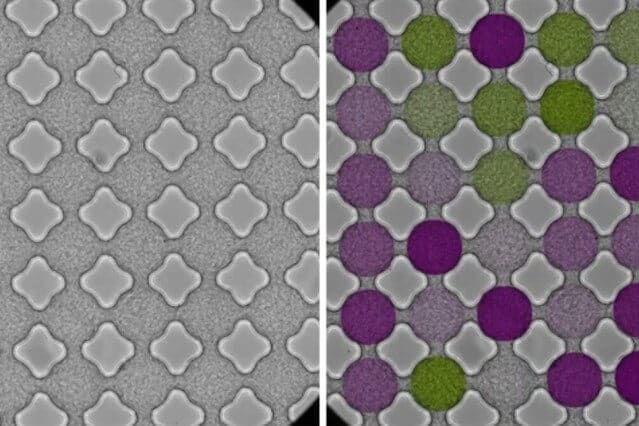here are certain universal patterns in nature that hold true, regardless of objects’ size, species, or surroundings. Take, for instance, the branching fractals seen in both tree limbs and blood vessels, or the surprisingly similar spirals in mollusks and cabbage.
Now scientists at MIT and Cambridge University have identified an unexpected shared pattern in the collective movement of bacteria and electrons: As millions of bacteria stream through a microfluidic lattice, they synchronize and swim in patterns similar to those of electrons orbiting around atomic nuclei in a magnetic material.
The researchers found that by tuning certain dimensions of the microfluidic lattice, they were able to direct millions of microbes to align and swim in the same direction, much the way electrons circulate in the same direction when they create a magnetic field. With slight changes to the lattice, groups of bacteria flowed in opposite directions, resembling electrons in a nonmagnetic material.
Surprisingly, the researchers also identified a mathematical model that applies to the motions of both bacteria and electrons. The model derives from a general lattice field theory, which is typically used to describe the quantum behavior of electrons in magnetic and electronic materials. The researchers reduced this complex model to a much simpler, “textbook” model, which predicts that a phase transition, or a change in flow direction, should occur with certain changes to a lattice’s dimensions — a transition that the team observed in their experiments with bacteria.
“It’s very surprising that we see this universality,” says Jörn Dunkel, assistant professor of applied mathematics at MIT. “The really nice thing is, you have a living system here that shows all these behaviors that people think are also going on in quantum systems.”
Dunkel and his colleagues at Cambridge University — Hugo Wioland, Francis Woodhouse, and Raymond Goldstein ’83 — published their results yesterday in the journal Nature Physics.



